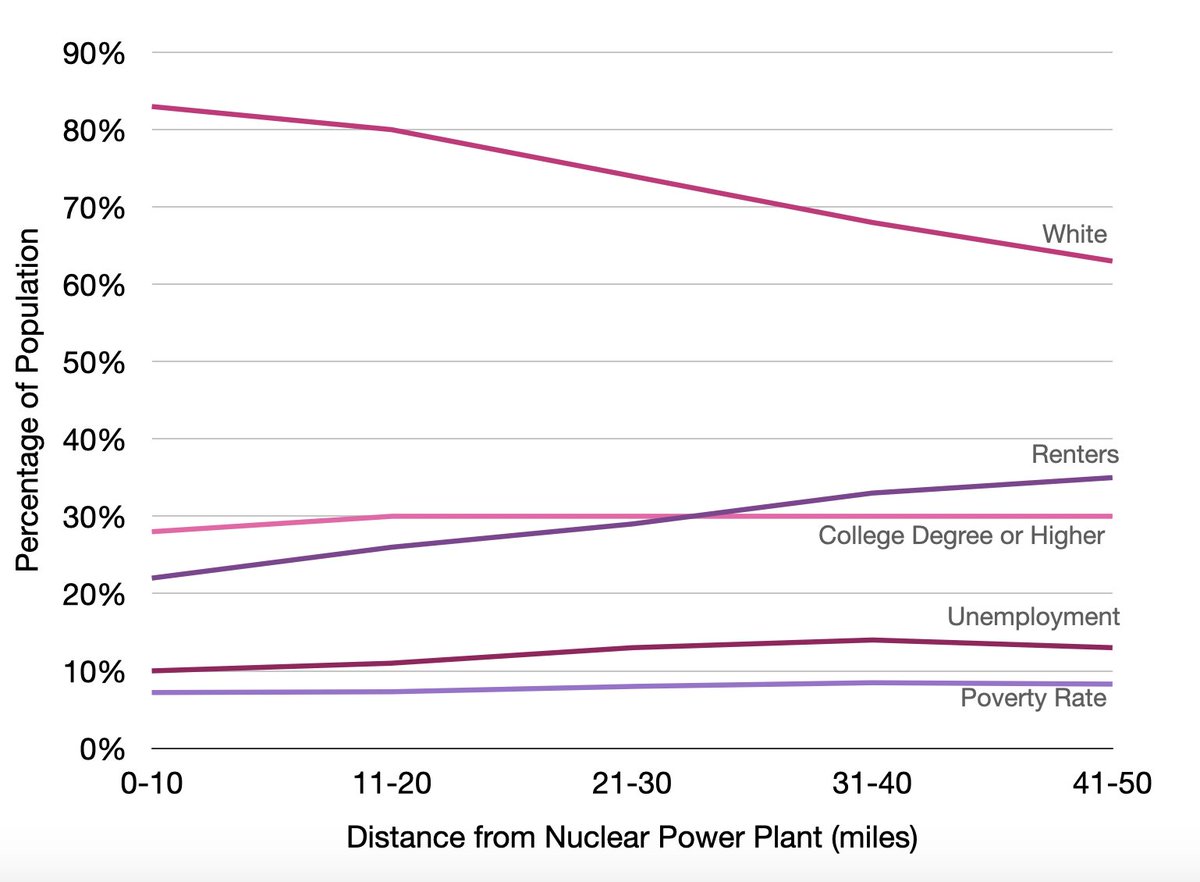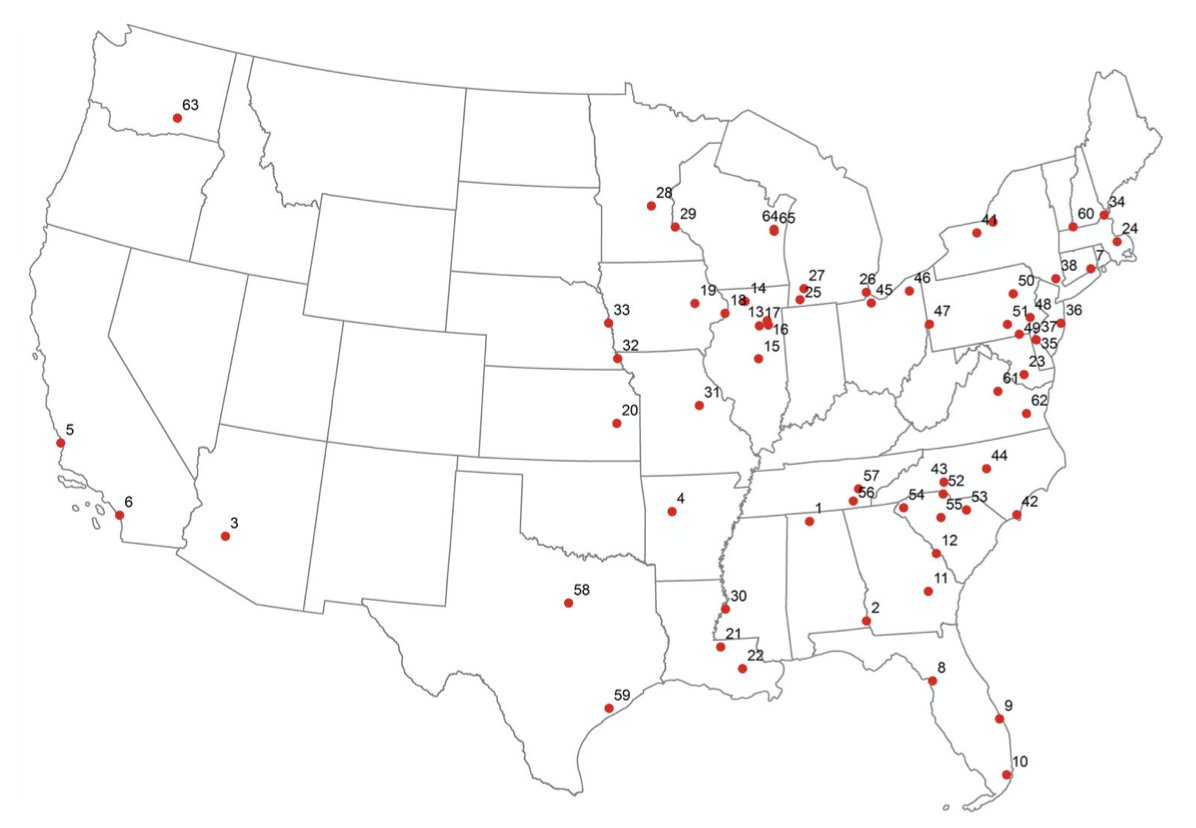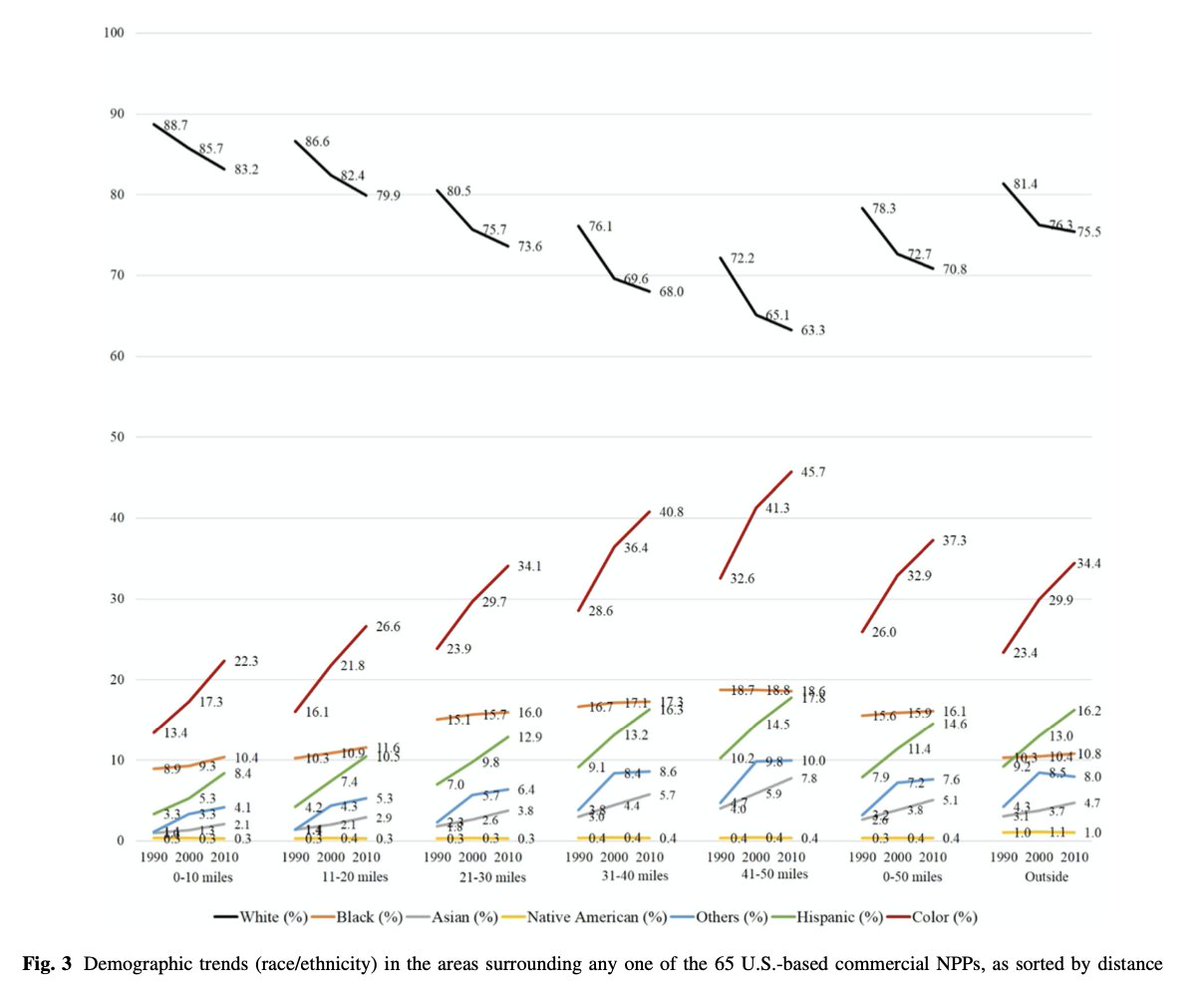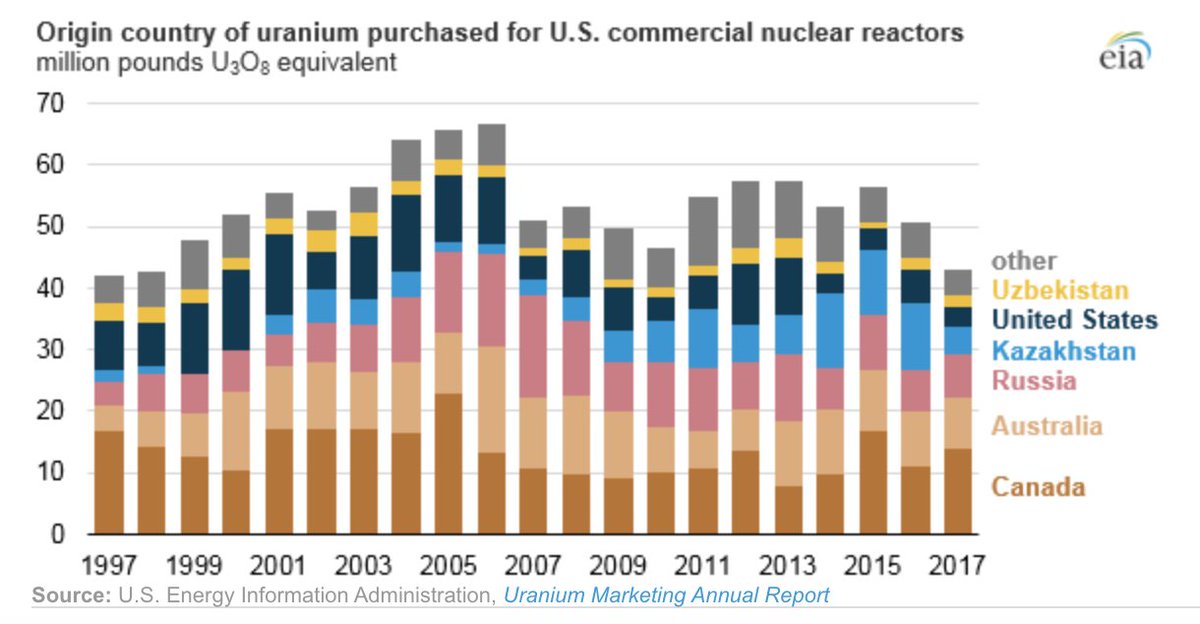
In energy and climate discussion there's been a lot more focus recently on Environmental Justice, which is great and long overdue. We all know fossil plants tend to be located in marginalized communities, and I've had many people ask me lately if the same is true for nuclear...
The answer: No for power plants, yes for fuel cycle. And it's complicated. This paper has great demographic analysis of areas around nuclear power plants: link.springer.com/article/10.100…
I made some graphics from their results....
I made some graphics from their results....
If you just look at the population living within 50 miles of a nuclear power plant in the US, it looks like fossil fuels: the population has more people of color, more renters, and slightly higher unemployment than the population living farther away. 

BUT 50 miles is a big radius: 30% of the US population in 2010 lived within 50 miles of a nuclear power plant! (This paper looks at 2010, 2000, and 1990). So, let's look more granularly at distance from plant...
If you plot demographic metrics by distance from a nuclear power plant, it's the opposite. The closer you get to the power plant, the population gets whiter, less renters, less unemployment and poverty. Which is maybe not surprising because... 

This demographic data is from 2010, most of these nuclear power plants have been operating in these communities for decades. We know that nuclear power plants employ *a lot* of people, pay higher salaries, & pay $$$ local taxes. That obv helps local economies over time
So, one could argue (and the nuclear industry does) that these plants help the local community, BUT it looks like it's tilted toward white communities benefiting. To flip the EJ question, how could we distribute the social & economic benefits of clean power more evenly
One caveat, nuclear power plants are not evenly distributed across the US. They are mostly east of the Mississippi, and located close to population centers. 

Of course the populations living near plants has changed over time. This chart from Kyne (2015) shows the change from 1990-2010. The populations living closest to nuclear power got less white over time but at about the same rate as the country as a whole 

It would be more interesting to see what the population looked like before construction started to after the plant comes online
Okay, but the fuel cycle for nuclear is a different story, those facilities do tend to be located more in marginalized communities. This is, unfortunately, not unique to nuclear. Where does lithium for batteries come from, or rare earths for renewables?
The US imports most of its commercial nuclear fuel. For all clean energy, there's a growing need to look at the justice impacts of the international supply chain. Are there ways to develop sustainable and equitable mining domestically? 

• • •
Missing some Tweet in this thread? You can try to
force a refresh




